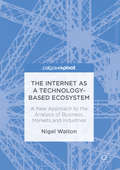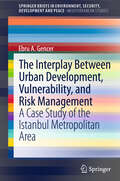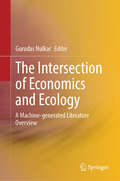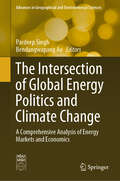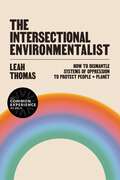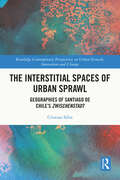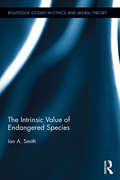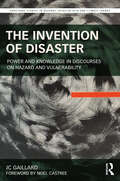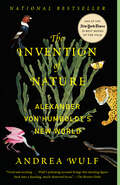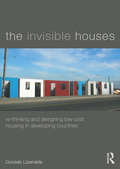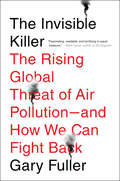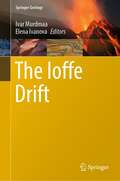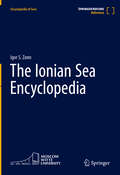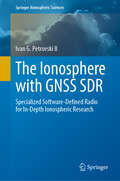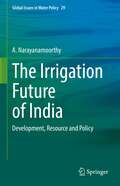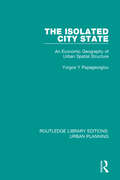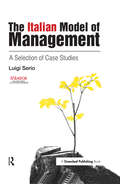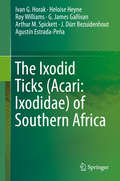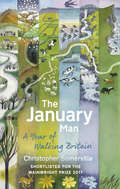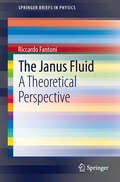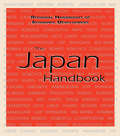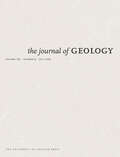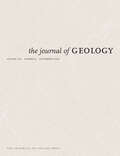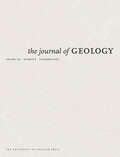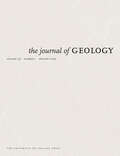- Table View
- List View
The Internet as a Technology-Based Ecosystem
by Nigel WaltonThis book examines and critiques classical approaches to strategic analysis, whilst exploring alternative methods which utilise ecosystem and platform concepts, as well as chaos and complexity theories. The innovative study provides a critique of the neoclassical Newtonian school of strategy, and proves it to be largely inappropriate as a decision-making methodology in today’s internet-based market. By developing a new biological hydrothermal vent model in which analogical comparisons are made with the Information Communication Technology (ICT) sector, the chapters challenge existing paradigms of competitive advantage and analyse the extent to which the Internet can be considered to be an ecosystem in its own right. The Internet as a Technology-Based Eco-System offers a range of alternative models and analytical frameworks for the analysis of internet-based technology companies in the twenty-first century, creating a valuable tool for students and academics undertaking research in strategy, technology and electronic engineering.
The Interplay between Urban Development, Vulnerability, and Risk Management
by Ebru A. GencerNatural disasters are increasingly affecting the world, taking lives unexpectedly and leaving many others injured and homeless. Moreover, disasters disrupt local, national and even global economies, instantly changing the direction of development. In the first half of 2011 alone, 108 natural disasters occurred, killing over 23 thousand people, affecting nearly 44 million others and causing more than 253 billion US dollars of economic damages (CRED 2011,1). Large urban settlements have become increasingly vulnerable to the impacts of natural disasters. The concentration of substandard infrastructure and housing, material assets, and inherent socio-economic inequalities increase vulnerability to disasters in large urban areas, especially in developing countries. The size, number, functions, and geographical distribution of large- and megacities create a special concern for disaster risk. Good urban management practices can be a powerful catalyst for reducing losses from natural disasters, while simultaneously helping to develop a sustainable environment. Yet, the existing situation indicates that sustainable planning and risk management measures are not taken into consideration or may not be put into practice for a variety of financial, political, and social reasons. This book argues that, on one hand, socio-economic disparities resulting from unsustainable urban development can increase vulnerability to natural hazards, and on the other hand, when paired with natural hazards this increased vulnerability can negatively affect urban areas, resulting in further inequality. This book will showcase this argument with theoretical reviews and quantitative analyses on the interplay between sustainable development and disaster vulnerability as well as an in-depth case study of the role of urban planning and risk management practices in creating the socio-economic and spatial vulnerabilities and predicted earthquake risk in the megacity of Istanbul.
The Intersection of Economics and Ecology: A Machine-generated Literature Overview
by Gurudas NulkarThis book is a machine-generated literature overview highlighting the importance of natural capital while studying the economics of ecology. It puts together available literature on this theme exploring it through the lens of sustainable development. While the main content is machine-generated, each chapter contains curated published content overview and an introduction by the editor, highlighting important areas and literature gaps, describing the connection of the topic with human economy, and examples of negative externalities. The topics seek out research articles that show a connection with mainstream economy, or rural livelihoods.The connection between natural capital and human economy, is well-known, but many of these negative externalities are complex problems to solve. While there is a growing awareness to capture the value of natural capital in economic decision-making, there is no universal consensus. However, assessing the economic value of naturalresources and ecosystem services, and integrating this information into decision-making processes such as cost-benefit analysis, corporate reporting, and government policy-making, holds a promise of finding long-term solutions to these market failures. By valuing natural capital, decision-makers can better understand the economic benefits and costs of different activities and policies, and make more informed choices that balance economic, social, and environmental objectives. Containing important introductions by the human editor to plug gaps in literature, the book is a great resource for policy-makers, students of economics and sustainable development, non-governmental organisations working in this field, and corporate managers who are responsible for allotting budgets towards corporate social responsibility programs.^
The Intersection of Global Energy Politics and Climate Change: A Comprehensive Analysis of Energy Markets and Economics (Advances in Geographical and Environmental Sciences)
by Pardeep Singh Bendangwapang AoThis book provides an analysis of the concurrence of energy politics and global climate change. The book starts with an explanation of what roles energy and climate change play in the correlation process and the anthropogenic activities that hamper the smooth functioning of their co-existence. The next part discusses the institutions and industries directly related to energy and climate change. The third part focuses on energy economics and markets to understand the global drivers for economic development. After that, the book presents the world's energy demand due to globalization and the environmental cost involved, followed by the part highlighting the importance of energy transitions and the extent to which the global political set-up is engaged in catering to those transitions. The sixth part of the book takes a comprehensive view of climate change mitigation strategies and carbon and ecological footprints, followed by discussions of future scenarios for building a sustainable framework and forecasts of the resulting political and economic trends. Finally, the last part deals with the challenges faced during the convergence of energy politics and climate change. The book is a valuable resource for early career researchers, university teachers, and professionals in think tanks.
The Intersectional Environmentalist: How to Dismantle Systems of Oppression to Protect People + Planet
by Leah ThomasFrom the 2022 TIME100 Next honoree and the activist who coined the term comes a primer on intersectional environmentalism for the next generation of activists looking to create meaningful, inclusive, and sustainable change. The Intersectional Environmentalist examines the inextricable link between environmentalism, racism, and privilege, and promotes awareness of the fundamental truth that we cannot save the planet without uplifting the voices of its people -- especially those most often unheard. Written by Leah Thomas, a prominent voice in the field and the activist who coined the term "Intersectional Environmentalism," this book is simultaneously a call to action, a guide to instigating change for all, and a pledge to work towards the empowerment of all people and the betterment of the planet. Thomas shows how not only are Black, Indigenous and people of color unequally and unfairly impacted by environmental injustices, but she argues that the fight for the planet lies in tandem to the fight for civil rights; and in fact, that one cannot exist without the other. An essential read, this book addresses the most pressing issues that the people and our planet face, examines and dismantles privilege, and looks to the future as the voice of a movement that will define a generation.
The Interstitial Spaces of Urban Sprawl: Geographies of Santiago de Chile’s Zwischenstadt (Routledge Contemporary Perspectives on Urban Growth, Innovation and Change)
by Cristian A. SilvaThis book proposes the idea of interstitial space as a theoretical framework to describe and understand the implications of in-between lands in urban studies and their profound transformative effects in cities and their urban character.The analysis of the interstitial spaces is structured into four themes: the conceptual grounds of interstitial spaces; the nature of interstices; the geographical scale of interstices; and the relationality of interstices. The empirical section of the book introduces seven cases that illustrate the varied nature of interstitiality to finally discuss its implications in the broader field of urban studies. Reflections upon further lines of enquiry and theories of urbanisation, urban sprawl, and cities are highlighted in the conclusion chapter. This is the ideal text for scholars of urban planning, strategic spatial planning, landscape planning, urban design, architecture, and other cognate disciplines as well as advanced students in these fields.
The Intrinsic Value of Endangered Species (Routledge Studies in Ethics and Moral Theory)
by Ian A. SmithWhy save endangered species without clear aesthetic, economic, or ecosystemic value? This book takes on this challenging question through an account of the intrinsic goods of species. Ian A. Smith argues that a species’ intrinsic value stems from its ability to flourish—its organisms continuing to reproduce successfully and it avoiding extinction—which helps to demonstrate a further claim, that humans ought to preserve species that we have endangered. He shows our need to exercise humility in our relations with endangered species through the preservation of their intrinsic goods, which in turn rectifies our degradation of their importance. Unique in its appeal to virtue ethics and to species concepts, The Intrinsic Value of Endangered Species is an important resource for scholars working in environmental ethics and the philosophy of biology.
The Invention of Disaster: Power and Knowledge in Discourses on Hazard and Vulnerability (Routledge Studies in Hazards, Disaster Risk and Climate Change)
by JC GaillardThis theoretical contribution argues that the domination of Western knowledge in disaster scholarship has allowed normative policies and practices of disaster risk reduction to be imposed all over the world. It takes a postcolonial approach to unpack why scholars claim that disasters are social constructs while offering little but theories, concepts and methods supposed to be universal in understanding the unique and diverse experiences of millions of people across very different cultures. It further challenges forms of governments inherited from the Enlightenment that have been rolled out as standard and ultimate solutions to reduce the risk of disaster. Ultimately, the book encourages the emergence of a more diverse set of world views/senses and ways of knowing for both studying disasters and informing policy and practice of disaster risk reduction. Such pluralism is essential to better reflect local realities of what disasters actually are around the world. This book is an essential read for scholars and postgraduate students interested in disaster studies as well as policy-makers and practitioners of disaster risk reduction.
The Invention of Nature: Alexander von Humboldt's New World
by Andrea WulfThe acclaimed author of Founding Gardeners reveals the forgotten life of Alexander von Humboldt, the visionary German naturalist whose ideas changed the way we see the natural world--and in the process created modern environmentalism.NATIONAL BEST SELLEROne of the New York Times 10 Best Books of the YearWinner of the Los Angeles Times Book Prize, The James Wright Award for Nature Writing, the Costa Biography Award, the Royal Geographic Society's Ness Award, the Sigurd F. Olson Nature Writing AwardFinalist for the Andrew Carnegie Medal for Excellence in Nonfiction, the Kirkus Prize Prize for Nonfiction, the Independent Bookshop Week Book AwardA Best Book of the Year: The New York Times, The Atlantic, The Economist, Nature, Jezebel, Kirkus Reviews, Publishers Weekly, New Scientist, The Independent, The Telegraph, The Sunday Times, The Evening Standard, The SpectatorAlexander von Humboldt (1769-1859) was an intrepid explorer and the most famous scientist of his age. In North America, his name still graces four counties, thirteen towns, a river, parks, bays, lakes, and mountains. His restless life was packed with adventure and discovery, whether he was climbing the highest volcanoes in the world or racing through anthrax-infected Siberia or translating his research into bestselling publications that changed science and thinking. Among Humboldt's most revolutionary ideas was a radical vision of nature, that it is a complex and interconnected global force that does not exist for the use of humankind alone. Now Andrea Wulf brings the man and his achievements back into focus: his daring expeditions and investigation of wild environments around the world and his discoveries of similarities between climate and vegetation zones on different continents. She also discusses his prediction of human-induced climate change, his remarkable ability to fashion poetic narrative out of scientific observation, and his relationships with iconic figures such as Simón Bolívar and Thomas Jefferson. Wulf examines how Humboldt's writings inspired other naturalists and poets such as Darwin, Wordsworth, and Goethe, and she makes the compelling case that it was Humboldt's influence that led John Muir to his ideas of natural preservation and that shaped Thoreau's Walden. With this brilliantly researched and compellingly written book, Andrea Wulf shows the myriad fundamental ways in which Humboldt created our understanding of the natural world, and she champions a renewed interest in this vital and lost player in environmental history and science.From the Hardcover edition.
The Invisible Houses: Rethinking and designing low-cost housing in developing countries
by Gonzalo LizarraldeWinner of the ACSA/AIA Housing Design Education Award! There is an increased interest among architects, urban specialists and design professionals to contribute to solve "the housing problem" in developing countries. The Invisible Houses takes us on a journey through the slums and informal settlements of South Africa, India, Colombia, Honduras, El Salvador, Cuba, Haiti and many other countries of the Global South, revealing the challenges of, and opportunities for, improving the fate of millions of poor families. Stressing the limitations of current approaches to housing development, Gonzalo Lizarralde examines the short-, mid- and long-term consequences of housing intervention. The book covers – among others – the issues of planning, design, infrastructure and project management. It explains the different variables that need to be addressed and the causes of common failures and mistakes, while outlining successful strategies based on embracing a sustained engagement with the complexity of processes that are generally invisible.
The Invisible Killer: The Rising Global Threat of Air Pollution-and How We Can Fight Back
by Gary FullerAn urgent examination of one of the biggest global crises facing us today--air pollution--looking at the drastic worsening of the problem, and what we can do about it."Fascinating, readable, and terrifying in equal measure." —Mark Lynas, author of Six DegreesThe air pollution that we breathe every day is largely invisible—but it is killing us. How did it get this bad, and how can we stop it? Far from a modern-day problem, scientists were aware of the impact of air pollution as far back as the seventeenth century. Now, as more of us live in cities, we are closer than ever to pollution sources, and the detrimental impact on the environment and our health has reached crisis point. The Invisible Killer will introduce you to the incredible individuals whose groundbreaking research paved the way to today's understanding of air pollution, often at their own detriment. Gary Fuller's global story examines devastating incidents from London's Great Smog to Norway's acid rain; Los Angeles's traffic problem to wood-burning damage in New Zealand. Fuller argues that the only way to alter the future course of our planet and improve collective global health is for city and national governments to stop ignoring evidence and take action, persuading the public and making polluters bear the full cost of the harm that they do. The decisions that we make today will impact on our health for decades to come. The Invisible Killer is an essential book for our times and a cautionary tale we need to take heed of.
The Ioffe Drift (Springer Geology)
by Elena Ivanova Ivar MurdmaaThe Discovery of the calcareous Ioffe Drift in the SW Atlantic in 2010 opens new perspectives in the contourite theory. Although demonstrating similar behavior relative to bottom water dynamics, rather rare and poorly studied calcareous contourites differ from their terrigenous analogs in origin, grain-size distribution, chemical and mineral composition of sedimentary particles. The detailed multidisciplinary study of the Ioffe Drift produces new knowledge on biogenic contourites deposited in pelagic realm, in conditions of low biological productivity and terrigenous material supply, under the influence of the Antarctic Bottom Water flow from the Vema Channel. The major intervals of prevailing erosion are inferred on the drift from 2.51/2.59 to 1.9 Ma and from 1.6 to 0.81 Ma thus indicating strong paleoceanographic changes most likely associated with the reorganization of deep-sea circulation and increased bottom water production in the Southern Ocean during the Early Pleistocene and, in particular, around the Mid-Pleistocene Transition.
The Ionian Sea Encyclopedia (Encyclopedia of Seas)
by Igor S. ZonnThe book is dedicated to the Ionian Sea, which is part of the Mediterranean. The encyclopedia contains about 600 articles on the hydrographic and geographic objects, hydrological features of the sea, biological resources, as well as administrative-territorial units of the Ionian countries. The most significant natural objects like islands, peninsulas, bays, rivers, mountains, their geographical peculiarities are briefly described as well as economy, culture and history, cities, ports, international agreements, research institutions, activities of outstanding scientists, researchers, travelers are presented in the publication. The chronology of the main historical events that have become significant landmarks in the history of discovery and exploration of the Ionian Sea from the 31 B.C. to the present day is given.
The Ionosphere with GNSS SDR: Specialized Software-Defined Radio for In-Depth Ionospheric Research (Springer Atmospheric Sciences)
by Ivan G. Petrovski IIThis comprehensive volume navigates through the complexities of Earth's ionosphere and its intricate relationship with GNSS spread-spectrum signals. The book delineates the nuanced structures and dynamics of Earth's atmosphere, offering profound insights into signal propagation, including a meticulous analysis of various ionospheric models. Delving into the instruments of choice, it encapsulates the facets of the GNSS space segment, its theoretical background, and practical applications. The ground and user segments discussed provide readers with a deep understanding of satellite dynamics and navigation data. Further chapters explore the intricacies of GNSS Software Defined Radio (SDR), offering a detailed examination of signal acquisition and tracking, and presenting innovative approaches to baseband data application without data decoding. A significant portion is devoted to manufacturing front-end hardware, providing guidance from specifications to testing, enabling readers to navigate the world of hardware design with ease. Lastly, the book ventures into the applications of GNSS receivers for ionospheric study, highlighting the construction of advanced observables and their practical applications in navigation processors. This section also elucidates the role of multi-station observables in extracting critical ionospheric information. A pivotal resource for researchers and professionals alike, this book stands as a testament to comprehensive research and innovation in the field of GNSS and SDR, fostering a deeper understanding of the Earth's ionosphere. This book serves as a natural progression from Dr.Petrocski's prior contributions, offering readers actionable insights grounded in theoretical understanding.
The Irrigation Future of India: Development, Resource and Policy (Global Issues in Water Policy #29)
by A. NarayanamoorthyThis book aims to bring forth and address the major issues confronting the irrigation sector of India and also to suggest policy pointers to sustain it. As the policy and reform canvas is large for a huge and diverse country, this book has particular focus on the most important and immediate issues and future options. The chapters not only focus on new research, in-depth analysis and technical details, but also provide a balanced review of the state of irrigation sector and comprehensive presentation of major issues, challenges and future options. With the presentation of in-depth analysis and synthesis of available knowledge, the work can act as a handbook for major irrigation water issues, actual policy changes, and potential reform that could turnaround the sector. Given the temporal and spatial data analysis of the irrigation sector, this book will be effective and useful as a research and teaching tool to students and researchers both in India and globally. Besides its professional audience within the academic, research and policy community, the non-technical format of the book will appeal to a general audience in the media, policy, and donor circles
The Isolated City State: An Economic Geography of Urban Spatial Structure (Routledge Library Editions: Urban Planning #18)
by Yorgos PapageorgiouOriginally published in 1990, The Isolated City State asks the questions, why have the world’s major cities experienced explosive growth? Why does the socio-economic status in North America roughly increase with distance from the city centre, while the socio-economic status in South America roughly decreases? What are the reasons behind the sudden decline of some large, central cities? Will recovery if it happens be equally rapid? Generally, to understand the phenomenon, simplifications are made which make it impossible to understand other phenomena. This major study synthesises a vast amount of theorising and research to provide answers to the major questions of urban geography.
The Italian Model of Management: A Selection of Case Studies
by Luigi SerioThis book is an essential resource for facilitators seeking to help students develop their knowledge of management practice in Italy. It presents a collection of the best case studies and accompanying teaching notes from the Italian Association for Management Development (ASFOR) competition in 2014. The cases are written by teachers across many of the members of ASFOR in Italy, leading business schools, corporate universities and academia. Knowledge gained by professionals often remains implicit and is rarely shared. By grouping together the award-winning case studies in this volume, readers can gain an important insight into how management is conducted in Italy. This collection shines a light on management practices across several industries. The Italian economy differs from others in that it is one in which small and family-run businesses dominate, and the relationship between the private sector and public life is unique. As a result, The Italian Model of Management provides the opportunity for students to enlarge the Anglo-Saxon model and perspective of management, and to offer cross-cultural learning experiences, based on the distinction of a “Made in Italy” competitive advantage. Each case provides an engaging story, plots the strategic development of the organization in question, and is supported by online teaching guidance and teaching notes.
The Ixodid Ticks (Acari: Ixodidae) of Southern Africa
by Agustín Estrada-Peña Roy Williams Ivan G. Horak Heloise Heyne G. James Gallivan Arthur M. Spickett J. Dürr BezuidenhoutThis is a comprehensive work summarizing the current state of knowledge of the biology of the hard ticks (Acari: Ixodidae) of Southern Africa (South Africa, Namibia, Botswana, Swaziland, Lesotho and Maputo Province, Mozambique). It provides an overview of the history of tick research in Southern Africa and the evolution of our knowledge of the ticks’ distribution and biology, as well as the methods used to determine tick distribution, abundance and host preference. The morphologies of most of the tick species known to occur in Southern Africa are described and illustrated, and their distributions are described and mapped in relation to the biomes of the region. The known hosts for each tick species are listed, and the tick’s host preferences are discussed. Information on most species life cycle in the laboratory and the field, and their seasonal occurrence, is summarized. The diseases of animals and humans transmitted or caused by each tick species are summarized in relation to tick ecology. Aspects of the biology of the major hosts relevant to tick infestations are described, and extensive tick/host and host/tick lists are provided for each country
The January Man: A Year of Walking Britain
by Christopher Somerville'Evocatively written and charming' - Countryfile'The January Man is a book that makes you want to pull on your boots, grab a map and get out there' - Country LifeThe January Man is the story of a year of walks that was inspired by a song, Dave Goulder's 'The January Man'. Month by month, season by season and region by region, Christopher Somerville walks the British Isles, following routes that continually bring his father to mind. As he travels the country - from the winter floodlands of the River Severn to the lambing pastures of Nidderdale, the towering seabird cliffs on the Shetland Isle of Foula in June and the ancient oaks of Sherwood Forest in autumn - he describes the history, wildlife, landscapes and people he encounters, down back lanes and old paths, in rain and fair weather.This exquisitely written account of the British countryside not only inspires us to don our boots and explore the 140,000 miles of footpaths across the British Isles, but also illustrates how, on long-distance walks, we can come to an understanding of ourselves and our fellow walkers. Over the hills and along the byways, Christopher Somerville examines what moulded the men of his father's generation - so reticent about their wartime experiences, so self-effacing, upright and dutiful - as he searches for 'the man inside the man' that his own father really was.
The Janus Fluid
by Riccardo FantoniThe state-of-the-art in the theoretical statistical physics treatment of the Janus fluid is reported with a bridge between new research results published in journal articles and a contextual literature review. Recent Monte Carlo simulations on the Kern and Frenkel model of the Janus fluid have revealed that in the vapor phase, below the critical point, there is the formation of preferred inert clusters made up of a well-defined number of particles: the micelles and the vesicles. This is responsible for a re-entrant gas branch of the gas-liquid binodal. Detailed account of this findings are given in the first chapter where the Janus fluid is introduced as a product of new sophisticated synthesis laboratory techniques. In the second chapter a cluster theory is developed to approximate the exact clustering properties stemming from the simulations. It is shown that the theory is able to reproduce semi-quantitatively the micellization phenomenon.
The Japan Handbook (Regional Handbooks of Economic Development #Vol. 3)
by Patrick HeenanFirst Published in 1999. Routledge is an imprint of Taylor & Francis, an informa company.
The Journal of Geology, volume 130 number 4 (July 2022)
by The Journal of GeologyThis is volume 130 issue 4 of The Journal of Geology. One of the oldest journals in geology, The Journal of Geology has since 1893 promoted the systematic philosophical and fundamental study of geology. The Journal publishes original research across a broad range of subfields in geology, including geophysics, geochemistry, sedimentology, geomorphology, petrology, plate tectonics, volcanology, structural geology, mineralogy, and planetary sciences. Many of its articles have wide appeal for geologists, present research of topical relevance, and offer new geological insights through the application of innovative approaches and methods.
The Journal of Geology, volume 130 number 5 (September 2022)
by The Journal of GeologyThis is volume 130 issue 5 of The Journal of Geology. One of the oldest journals in geology, The Journal of Geology has since 1893 promoted the systematic philosophical and fundamental study of geology. The Journal publishes original research across a broad range of subfields in geology, including geophysics, geochemistry, sedimentology, geomorphology, petrology, plate tectonics, volcanology, structural geology, mineralogy, and planetary sciences. Many of its articles have wide appeal for geologists, present research of topical relevance, and offer new geological insights through the application of innovative approaches and methods.
The Journal of Geology, volume 130 number 6 (November 2022)
by The Journal of GeologyThis is volume 130 issue 6 of The Journal of Geology. One of the oldest journals in geology, The Journal of Geology has since 1893 promoted the systematic philosophical and fundamental study of geology. The Journal publishes original research across a broad range of subfields in geology, including geophysics, geochemistry, sedimentology, geomorphology, petrology, plate tectonics, volcanology, structural geology, mineralogy, and planetary sciences. Many of its articles have wide appeal for geologists, present research of topical relevance, and offer new geological insights through the application of innovative approaches and methods.
The Journal of Geology, volume 131 number 1 (January 2023)
by The Journal of GeologyThis is volume 131 issue 1 of The Journal of Geology. One of the oldest journals in geology, The Journal of Geology has since 1893 promoted the systematic philosophical and fundamental study of geology. The Journal publishes original research across a broad range of subfields in geology, including geophysics, geochemistry, sedimentology, geomorphology, petrology, plate tectonics, volcanology, structural geology, mineralogy, and planetary sciences. Many of its articles have wide appeal for geologists, present research of topical relevance, and offer new geological insights through the application of innovative approaches and methods.
